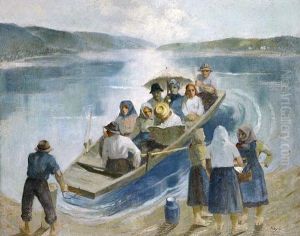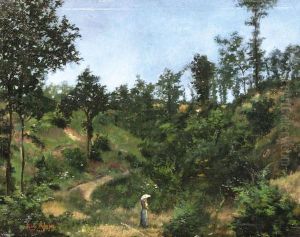Alajos Bay Paintings
Alajos Bay was a notable Hungarian artist, born in 1871, whose work significantly contributed to the art scene in Hungary and beyond during the late 19th and early 20th centuries. Trained in the fine arts, Bay's career spanned across various disciplines, including painting, graphic design, and illustration, showcasing his versatility and adeptness in each field. His artistic journey was marked by a dedication to exploring and capturing the essence of his subjects, ranging from landscape and portrait painting to more complex thematic compositions that reflected societal and cultural nuances of his time.
Bay's education and artistic development were deeply influenced by the vibrant cultural milieu of Hungary and Europe at large, during a period of significant transformation and modernization. He was part of a generation of artists who sought to navigate the tensions between traditional art forms and the emerging modernist movements that were beginning to take shape across the continent. This context provided Bay with a rich tapestry of influences and inspirations, which he skillfully integrated into his work, creating pieces that were both reflective of contemporary trends and deeply personal.
Throughout his career, Alajos Bay exhibited his work extensively, both in Hungary and internationally, earning recognition and accolades for his contributions to the arts. His works were characterized by a keen observation of detail, a profound sense of color, and a commitment to realism, blended with elements of impressionism and expressionism. This stylistic versatility allowed him to capture the changing moods and atmospheres of his environments, making his paintings evocative and resonant with audiences.
Despite the acclaim he received during his lifetime, Alajos Bay's legacy has been somewhat overshadowed by other contemporaries, partly due to the tumultuous historical events that unfolded in Hungary and Europe in the decades following his death in 1937. However, recent years have seen a resurgence of interest in his work, with art historians and collectors recognizing the significance of his contributions to the Hungarian art scene and his role in the broader European artistic landscape of the early 20th century. Today, Bay's paintings and illustrations are treasured for their historical value and artistic merit, offering insights into the cultural and social dynamics of his era.


